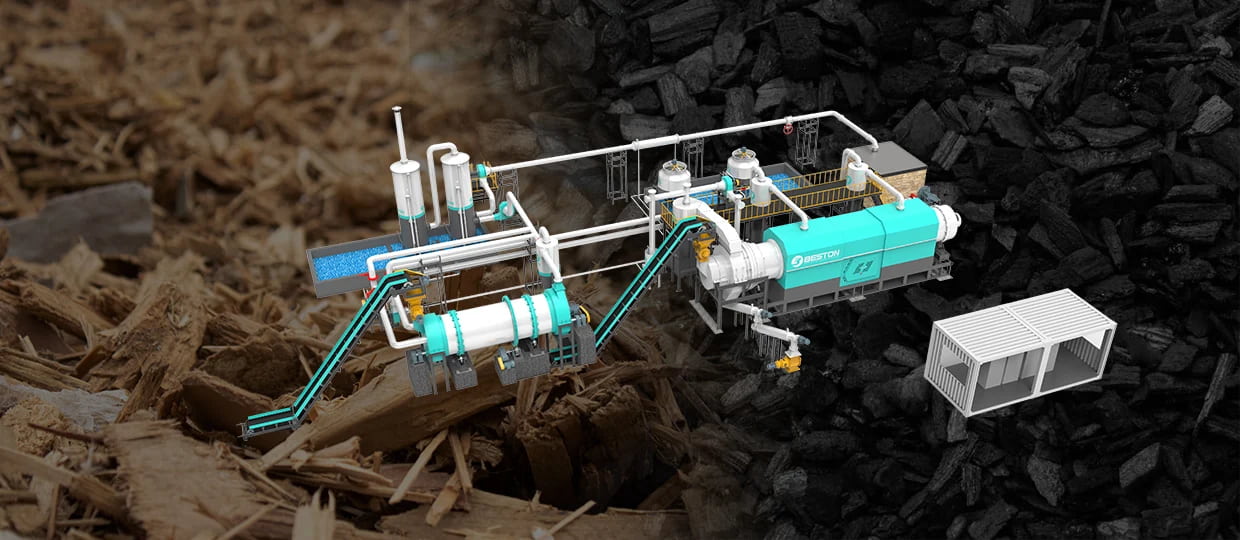The Advantages of Making Charcoal from Forest Management Waste
Forest management waste, including fallen branches, leaves, and other wood residues, represents a significant environmental and logistical challenge in forested regions. Traditionally, these materials have been left to decay, burned as waste, or discarded. However, the emergence of advanced technologies, such as the wood charcoal making machine, has provided a sustainable and efficient solution for turning forest management waste into a valuable resource. This approach not only addresses waste disposal issues but also offers numerous economic, environmental, and social benefits.
Environmental Benefits of Charcoal Production
One of the primary advantages of converting forest management waste into charcoal is its positive impact on the environment. Forest waste, if left unmanaged, can accumulate and increase the risk of wildfires, especially in dry and hot climates. These unmanaged biomass materials are highly flammable and contribute to dangerous fire hazards. By utilizing a wood charcoal making machine, these waste materials are processed in a controlled environment, converting them into a stable, carbon-rich product—charcoal—that is much less likely to contribute to fires.
The pyrolysis process, used in the wood charcoal making machine, also reduces the amount of greenhouse gas emissions compared to traditional burning or open-air disposal methods. When biomass is burned in open flames, it releases large quantities of CO2 and other pollutants into the atmosphere. In contrast, the pyrolysis process captures and converts the carbon present in the biomass into biochar, which sequesters carbon in a stable form for potentially hundreds or even thousands of years. This sequestration helps mitigate the impact of climate change by reducing the amount of carbon dioxide in the atmosphere.
Additionally, charcoal produced from forest management waste can be used as biochar, a highly effective soil amendment that improves soil fertility, water retention, and crop yield. When added to agricultural soils, biochar has the potential to store carbon in the soil, further enhancing its role in carbon sequestration. The use of biochar in farming promotes sustainable agricultural practices, contributing to a healthier environment.

Economic Benefits of Charcoal Production
The economic advantages of using forest management waste for charcoal production are substantial. In many regions, forest management operations produce large volumes of low-value waste material, often incurring disposal costs. These costs can be avoided by converting the waste into valuable charcoal, which has high demand across various industries. The sawdust charcoal making machine turns low-cost waste into a marketable product that can be sold for profit.
Charcoal made from forest waste is widely used in several sectors, including energy production, metalworking, and cooking. It is an essential fuel source in many developing countries, where it is used for household cooking and heating. Additionally, charcoal's use in industries such as iron and steel manufacturing and the production of activated carbon adds to its broad market appeal.
Moreover, the charcoal industry itself creates economic opportunities. The establishment of a charcoal production facility, including the operation of a wood charcoal making machine, creates jobs in rural areas where forest management waste is abundant. These jobs range from machine operation and maintenance to logistics, warehousing, and distribution. By creating a local market for forest waste, communities can generate income, stimulate local economies, and reduce dependency on imported fuels.
Sustainability and Waste Reduction
Another key advantage of producing charcoal from forest management waste is its role in waste reduction and sustainability. Forest management practices often generate large quantities of residues that are left behind after logging, thinning, or clearing. Instead of allowing these residues to decay, burn, or cause ecological imbalances, converting them into charcoal offers a far more sustainable solution.
The conversion process reduces the need for deforestation and limits the pressure on existing forest resources. By using waste materials that would otherwise be discarded or left to degrade, charcoal production helps conserve forests and their biodiversity. Additionally, this practice can mitigate soil erosion and protect waterways, which might otherwise be compromised by unmanaged forest debris.
Furthermore, the charcoal production process can be integrated with other sustainable practices, such as the use of waste heat for power generation. Many wood charcoal making machines are designed with energy-efficient systems that allow the byproducts of pyrolysis, such as gases and heat, to be utilized within the system itself. This energy-efficient approach minimizes the environmental footprint of charcoal production while maximizing the profitability of the operation.
Technological Innovation and Efficiency
The development of modern wood charcoal making machines has revolutionized the charcoal industry, making the conversion of forest management waste more efficient and environmentally friendly. These machines use advanced pyrolysis technology to convert biomass into charcoal, ensuring a higher yield and better-quality product compared to traditional methods.
The pyrolysis process involves heating the biomass in the absence of oxygen, which prevents the materials from burning and instead results in the formation of charcoal. This method allows for greater control over the temperature and process, which in turn improves the consistency and quality of the charcoal produced. Additionally, some machines are equipped with gasification systems that capture and reuse the gases produced during pyrolysis, reducing waste and enhancing the efficiency of the operation.
These technological advancements also contribute to reducing the carbon footprint of the entire process. Compared to conventional methods, the modern wood charcoal making machine minimizes emissions, making it a more eco-friendly option for producing charcoal from forest management waste.
Conclusion
The conversion of forest management waste into charcoal using a wood charcoal making machine offers numerous advantages, both for the environment and for the economy. It helps mitigate the risk of wildfires, reduces greenhouse gas emissions, and contributes to carbon sequestration. From an economic standpoint, it transforms low-value waste into a profitable product, creating local job opportunities and supporting sustainable agricultural practices.
Moreover, modern technological advancements in pyrolysis equipment ensure that the process is efficient, cost-effective, and environmentally responsible. As demand for sustainable energy and eco-friendly products continues to grow, the charcoal made from forest management waste is set to play an important role in shaping a greener, more sustainable future.